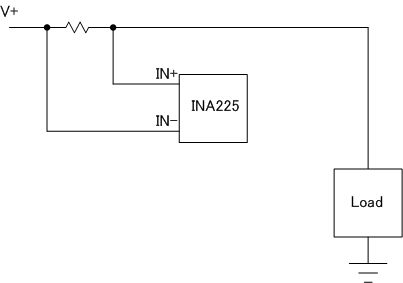Hi,
I want to ask about INA225-Q1.
Could you please confirm following question ?
* In case of inputting "Vs"=0V w/ "IN+/IN-" = 14.4V, is there possibility that the voltage which apply to IN+/IN- will sneak around to other terminals ?
I understood as long as input is 36V or less, it does not matter when Vs is at 0V.
However, we want to confirm that there is possibility that above thing will happen just in case.
Best Regards,
Machida
* In case of inputting "Vs"=0V w/ "IN+/IN-" = 14.4V, is there possibility that the voltage which apply to IN+/IN- will sneak around to other terminals ?



